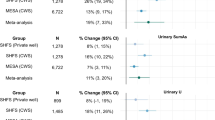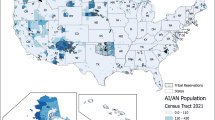Abstract
A National Human Exposure Assessment Survey (NHEXAS) field study was performed in U.S. Environmental Protection Agency (EPA) Region V, providing population-based exposure distribution data for selected elements in several personal, environmental, and biological media. Population distributions are reported for the 11 elements that were measured in water and dietary samples. Dietary intakes and home tap water concentrations of lead, arsenic, and cadmium were further examined for intermedia associations, for differences between dietary exposure for adults and children, and to estimate the proportion of the population above health-based reference values (dietary) or regulatory action levels or maximum contaminant levels (water). Water lead and arsenic concentrations were significantly associated with dietary intake. Intake of all elements was higher from solid foods than from liquid foods (including drinking water). Dietary intakes of Pb, As, and Cd were greater than those calculated for intake from home tap water or inhalation on a µg/day basis. Median dietary intakes for the Region V population for Pb, As, and Cd were 0.10, 0.13, and 0.19 µg/kg bw/day, respectively. While Pb, As, and Cd concentrations in the foods consumed by 0 to 6-year-old children were similar to or lower than those for adults, dietary intakes calculated on a body weight basis were 1.5 to 2.5 times higher for young children. Intrapersonal intake differences accounted for most of the variance in short-term (daily) dietary intakes for Pb and As, while interpersonal differences accounted for more of the intake variance for Cd. Only small percentages of the population exceeded health-based intake reference values or concentrations equal to regulatory levels in water for Pb, As, and Cd.
This is a preview of subscription content, access via your institution
Access options
Subscribe to this journal
Receive 6 print issues and online access
$259.00 per year
only $43.17 per issue
Buy this article
- Purchase on Springer Link
- Instant access to full article PDF
Prices may be subject to local taxes which are calculated during checkout
Similar content being viewed by others
Author information
Authors and Affiliations
Corresponding author
Rights and permissions
About this article
Cite this article
THOMAS, K., PELLIZZARI, E. & BERRY, M. Population-based dietary intakes and tap water concentrations for selected elements in the EPA Region V National Human Exposure Assessment Survey (NHEXAS). J Expo Sci Environ Epidemiol 9, 402–413 (1999). https://doi.org/10.1038/sj.jea.7500051
Published:
Issue Date:
DOI: https://doi.org/10.1038/sj.jea.7500051
Keywords
This article is cited by
-
Toxic element levels in ingredients and commercial pet foods
Scientific Reports (2021)
-
Daily dietary intakes of zinc, copper, lead, and cadmium as determined by duplicate portion sampling combined with either instrumental analysis or the use of food composition tables, Shiraz, Iran
Environmental Monitoring and Assessment (2015)
-
High cadmium and low lead exposure of children in Japan
International Archives of Occupational and Environmental Health (2013)
-
Dietary cadmium exposure and prostate cancer incidence: a population-based prospective cohort study
British Journal of Cancer (2012)
-
Biologically based modeling of multimedia, multipathway, multiroute population exposures to arsenic
Journal of Exposure Science & Environmental Epidemiology (2008)



